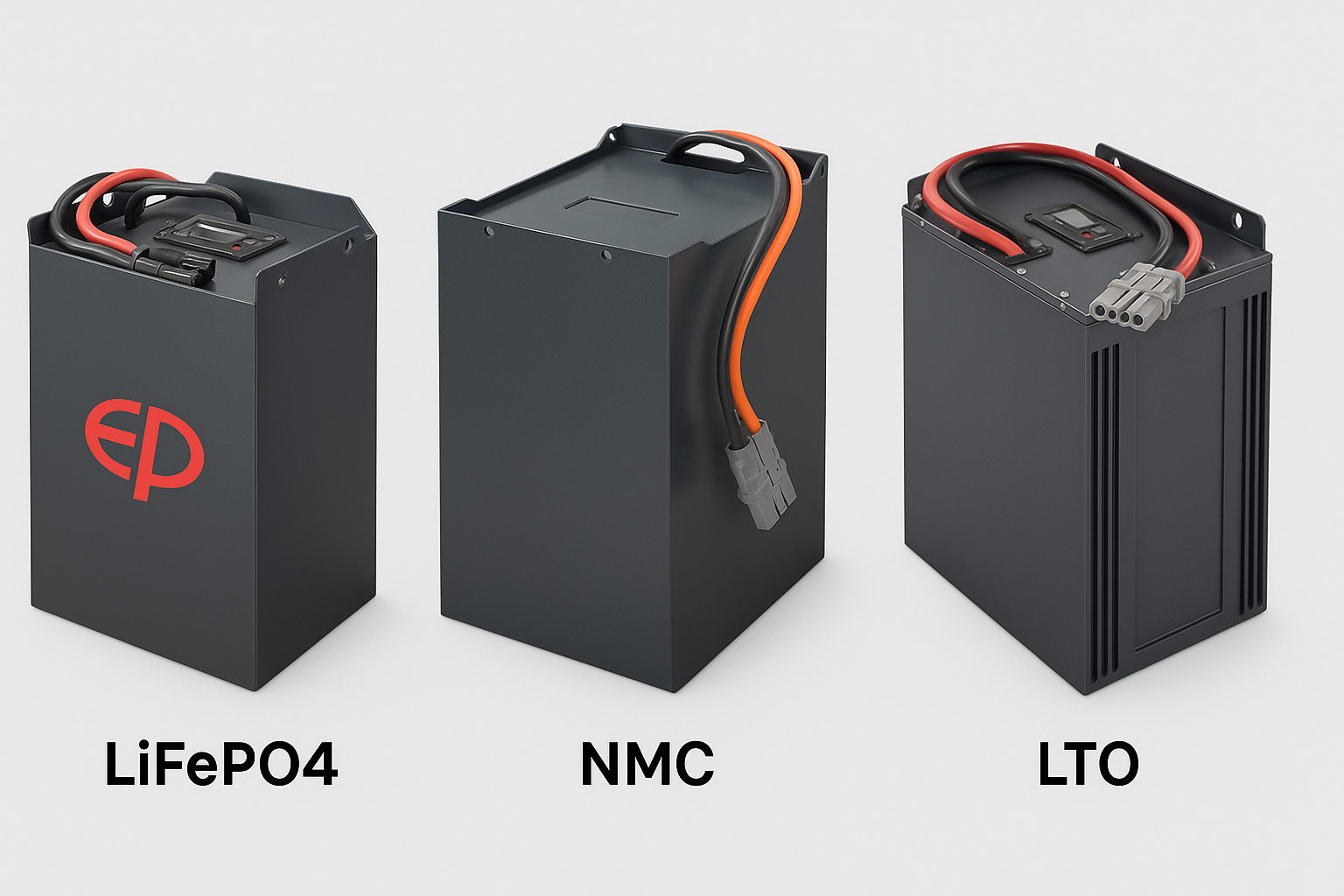Which Types of Lithium Batteries Are Currently Used in Electric Forklifts?
Lithium batteries are gradually replacing traditional lead-acid batteries in electric forklifts due to advantages such as longer lifespan, faster charging, and low maintenance. Various types of lithium batteries are used depending on the manufacturer and application needs. Here are the most common ones:
🔋 1. Lithium Iron Phosphate (LiFePO4)
Most commonly used in forklifts today.
-
Advantages: High safety, good thermal stability, long lifespan (3,000–5,000 cycles), fast charging.
-
Disadvantages: Lower energy density compared to some other types.
-
➡️ Best for: Continuous operation environments that require stable and safe performance.
🔋 2. Lithium NMC (Nickel Manganese Cobalt Oxide)
Higher energy density than LiFePO4, allowing longer operation with the same battery size.
-
Advantages: Lightweight, high capacity, high performance.
-
Disadvantages: More expensive, slightly less safe than LiFePO4 without proper management.
-
➡️ Best for: Applications requiring long runtime and limited battery installation space.
🔋 3. Lithium Titanate (LTO) – Less common
Extremely fast charging (within minutes), ultra-long lifespan (10,000+ cycles).
-
Advantages: Very durable, performs well in extreme temperatures.
-
Disadvantages: Very high cost, low energy density.
-
➡️ Best for: Special applications or highly demanding industrial environments.
📌 Quick Comparison Summary
| Battery Type | Cycle Life | Fast Charging | Safety | Cost | Energy Density |
|---|---|---|---|---|---|
| LiFePO4 | 3,000–5,000 | ✅ | ✅ | Medium | Medium |
| NMC | 1,000–2,000 | ✅ | ⚠️ | High | High |
| LTO | 10,000+ | ✅✅✅ | ✅✅✅ | Very High | Low |



